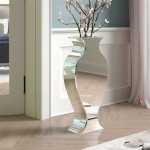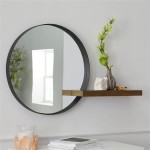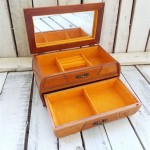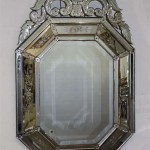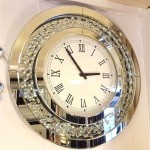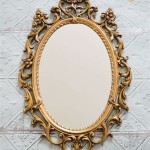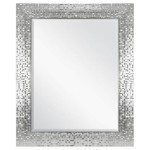Types of Mirrors and Lenses
Mirrors and lenses are fundamental optical components that manipulate light through reflection and refraction, respectively. Understanding their different types and properties is crucial in various fields, from everyday objects like eyeglasses and cameras to complex scientific instruments like telescopes and microscopes.
Mirrors are broadly classified based on the shape of their reflecting surface. The most common types are plane, concave, and convex mirrors.
Plane mirrors have a flat reflective surface. They produce virtual, upright images that are the same size as the object and located at the same distance behind the mirror as the object is in front of it. The image formed is laterally inverted, meaning left and right are swapped.
Concave mirrors have a reflecting surface that curves inward, like the inside of a sphere. They can produce both real and virtual images depending on the object's distance from the mirror. When the object is located beyond the focal point, a real, inverted image is formed. When the object is located between the focal point and the mirror, a virtual, upright, and magnified image is formed. Concave mirrors are used in various applications, such as reflecting telescopes and shaving mirrors.
Convex mirrors have a reflecting surface that curves outward. They always produce virtual, upright, and diminished images, regardless of the object's position. The field of view of a convex mirror is wider than that of a plane mirror of the same size, making them useful for security mirrors in shops and side-view mirrors in vehicles.
Lenses, unlike mirrors, manipulate light through refraction. They are typically made of transparent materials like glass or plastic and have two surfaces that are either both curved or one curved and one flat. Lenses are categorized into two main types: convex and concave.
Convex lenses, also known as converging lenses, are thicker in the middle than at the edges. They converge parallel rays of light to a single point called the focal point. Convex lenses can produce both real and virtual images. A real, inverted image is formed when the object is located beyond the focal point. A virtual, upright, and magnified image is formed when the object is placed between the focal point and the lens. Applications of convex lenses include magnifying glasses, eyeglasses for farsightedness, and camera lenses.
Concave lenses, also known as diverging lenses, are thinner in the middle than at the edges. They diverge parallel rays of light. Concave lenses always produce virtual, upright, and diminished images, irrespective of the object’s position. They are used in eyeglasses for nearsightedness, peepholes, and some telescope designs.
Understanding the properties of different mirror and lens types is crucial for designing optical systems. The focal length, a key parameter for both mirrors and lenses, determines the image size and location. For a mirror, the focal length is half of the radius of curvature. For a lens, the focal length depends on the refractive index of the lens material and the curvature of its surfaces.
The image formation by mirrors and lenses can be analyzed using ray diagrams. These diagrams use specific rays of light, such as those passing through the focal point or the center of the lens/mirror, to determine the location, size, and orientation of the image.
The magnification of an image, another important concept, is the ratio of the image height to the object height. It indicates whether the image is enlarged or diminished compared to the object. A magnification greater than one indicates an enlarged image, while a magnification less than one indicates a diminished image.
The sign conventions used in optical calculations provide information about the image characteristics. A positive image distance indicates a real image formed on the opposite side of the lens/mirror from the object, while a negative image distance indicates a virtual image formed on the same side as the object. A positive magnification indicates an upright image, while a negative magnification indicates an inverted image.
Beyond the basic types discussed, there are other specialized mirrors and lenses. Aspherical lenses, for example, have surfaces that are not portions of a sphere. They are designed to reduce spherical aberration, a type of optical distortion. Cylindrical lenses have a curved surface in one direction and a flat surface in the perpendicular direction. They are used to correct astigmatism, a common vision problem.
Fresnel lenses are a special type of lens with a complex surface consisting of concentric grooves. They are thinner and lighter than conventional lenses while maintaining similar optical properties. Fresnel lenses find applications in lighthouses, overhead projectors, and solar concentrators.
Parabolic mirrors, a specific type of concave mirror, have a parabolic shape. They are designed to focus parallel rays of light to a single point with minimal aberration. Parabolic mirrors are used in reflecting telescopes and satellite dishes.
The selection of the appropriate mirror or lens for a specific application depends on the desired image characteristics, such as size, orientation, and location, as well as practical considerations, such as size, weight, and cost.

Ppt Mirrors And Lenses Powerpoint Presentation Free Id 5516427

Ppt Mirrors Amp Lenses Powerpoint Presentation Free Id 419702

Ppt Mirrors And Lenses Powerpoint Presentation Free Id 714383

Ppt Lenses And Mirrors Powerpoint Presentation Free Id 5371165

Uses Of Mirrors And Lenses In Optical Devices Grade 10 Science Deped Melc Quarter 2 Module 5

Ppt S Of Lenses And Mirrors Powerpoint Presentation Free Id 3737780

S Of Mirrors And Lenses In Optical Instruments

Ppt Chapter 23 Powerpoint Presentation Free Id 759256

Pin On Optics

Ppt Chapter 23 Mirrors And Lenses Powerpoint Presentation Free Id 1455774

